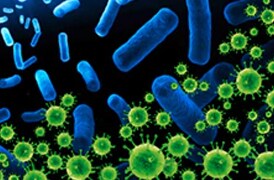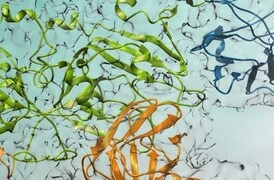Search Thermo Fisher Scientific
The Thermo Scientific Ceta-D Camera is a scintillator-based camera optimized for low-dose diffraction data collection. It is ideal for working with dose-sensitive materials, such as proteins, pharmaceutical molecules, and organic materials.
The camera’s high sensitivity allows for reliable detection of high-resolution, low-intensity diffraction peaks, and its high signal-to-noise ratio enables accurate measurement of the integrated peak intensity. Both of these properties are prerequisites for obtaining high-resolution structural information. After acquisition, the diffraction patterns and metadata are readily available for processing (similar to standard X-ray diffraction data), using software packages like DIALS or XDS. Resolutions better than 1 Å have been reported.
MicroED package
Coupled with the Ceta-D Camera, the MicroED Package provides all the necessary elements to perform micro electron diffraction, either on a new instrument or as a retrofit onto an existing tool. It includes:
- Thermo Scientific EPU-D Software for screening and automated data acquisition. EPU-D Software now expands the intuitive capabilities and unified user experience of Thermo Scientific EPU Software to the electron crystallography domain.
- Optimized smaller beam stop to mask the central beam without blocking low-resolution diffraction spots.
- Optimized aperture set to maximally suppress unwanted background signals from the area surrounding the crystal.
- Dedicated electron-optical settings to enable optimal camera utilization while benefiting from best sample-beam geometry.
The MicroED Package is a perfect match with the CETA-D Camera but may also be combined with other Thermo Scientific cameras for special application requirements.

Ceta-D camera
- Optimized for low-dose diffraction data collection
- High sensitivity for reliable detection of high-resolution, low-intensity diffraction peaks
- High signal-to-noise ratio for accurate integrated peak intensity
MicroED package
- Dedicated software for crystal/diffraction screening as well as automated data acquisition
- Modified beam stop, optimized for micro electron diffraction
- Optical presets provide optimized camera exposure for MicroED
- Optimized C2/SA aperture set and 90° rotation projection system (200 kV systems only)
- Compatible with Thermo Scientific Krios, Glacios, Talos Arctica and Talos F200 Cryo-TEMs. For compatibility with other systems, please consult your sales representative
| Sensor | 4,096 x 4,096, 14 μm pixel CMOS |
| Camera architecture | Fiber optic coupled scintillator (1:1) frame rate Standard: 4k × 4k, 2 fps; 2k × 2k, 8 fps; 1k × 1k, 18 fps Noise reduction: 4k × 4k, 2 fps; 2k × 2k, 6 fps; 1k × 1k, 6 fps |
| Imaging performance | In 4k × 4k mode: DQE at 0.1 Nyquist: > 26% at 300 kV, > 40% at 200 kV |
| Duty cycle in movie mode | 100% in rolling shutter mode |
| Conversion efficiency | >26 counts/primary electron at 200 kV >22 counts/primary electron at 300 kV |
| Mounting position | On-axis, bottom mounted, retractable |

Pesquisa de doenças infecciosas
As técnicas da crio-EM (microscopia crioeletrônica) permitem observações em várias escalas de estruturas biológicas 3D em seus estados quase nativos, informando um desenvolvimento mais rápido e eficiente da terapêutica.

Descoberta de Fármacos
Saiba como aproveitar o desenho racional de medicamentos para muitas outras classes principais de alvos de medicamentos, levando aos melhores medicamentos da categoria.

MicroED
A microED é uma nova técnica fascinante com aplicações na determinação estrutural de pequenas moléculas e proteínas. Com esse método, é possível extrair detalhes atômicos de nanocristais individuais (tamanho < 200 nm), mesmo em uma mistura heterogênea.

MicroED
A microED é uma nova técnica fascinante com aplicações na determinação estrutural de pequenas moléculas e proteínas. Com esse método, é possível extrair detalhes atômicos de nanocristais individuais (tamanho < 200 nm), mesmo em uma mistura heterogênea.
Serviços de microscopia eletrônica para
a ciência dos materiais
Para garantir o desempenho ideal do sistema, fornecemos acesso a uma rede de especialistas em serviços de campo, suporte técnico e peças de reposição certificadas.
